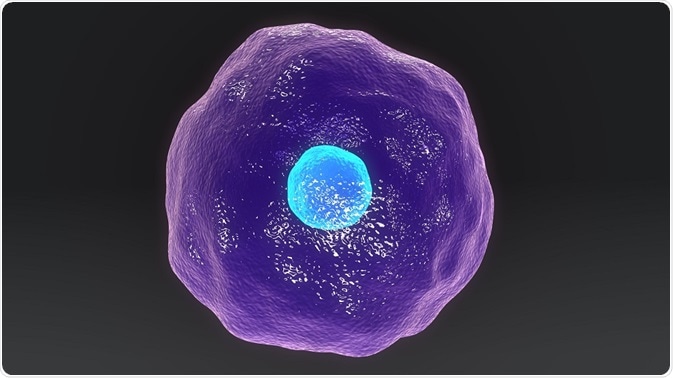
Senescence and Aging
Aging is the deterioration, over a period of time, of an organism's physiological functions that are necessary for survival. Eventually, aging leads to cell death.
 Image Credit: sciencepics / Shutterstock
Image Credit: sciencepics / ShutterstockCauses of aging
The three major hallmarks of aging are (i) primary drivers that cause damage, (ii) antagonistic drivers that act in response to the damage, and (iii) integrative drivers that are a consequence of the damage accrued over the cell’s lifetime.
Examples of primary drivers are damage to the telomeres, epigenetic and mitochondrial dysfunction, as well as damage to DNA. Senescence belongs to the antagonistic class, while proteostasis dysfunction and disruptions in the signaling pathways are the integrative drivers.
Senescence is the process of stable, irreversible growth arrest of cells. This process contributes to aging and age-related diseases. Apart from bringing about changes in the phenotype of an organism, senescence also causes chromatin remodeling, metabolic changes, increased autophagy, and release of numerous complex proinflammatory factors.
Types of senescence
Senescence occurs in three different scenarios: senescence due to normal aging; senescence due to age-related diseases, and senescence induced due to therapy (such as chemotherapy).
Senescence due to normal aging
Many studies have been conducted to understand senescence that happens because of natural aging. Two efficient animal models used for these studies are senescence-prone progeroid mouse models and transgenic mice.
Studies on budding uninhibited by benzimidazole-related 1 (BubR1)-hypomorphic progeroid mice have revealed that some types of cells are more susceptible to damage caused by senescence. For instance, the muscle and fat progenitor cells are more vulnerable to senescence leading to loss of adipose tissue mass and sarcopenia.
In stem cells, the effects of cell-automated senescence lead to an overall decline in the tissue regenerative potential. BubR1 progeroid model revealed that the senescence-associated secretory phenotype (SASP) affects the stem cells, bringing about structural changes to the extracellular matrix and interfering with the endocrine-responsive signaling pathways.
Senescence due to age-related diseases
Senescence usually sets in when the body is afflicted by a pathological condition. Some of the factors that drive senescence in age-related diseases are loss of proliferation-competent cells, SASP-mediated inflammation, and remodeling of the extracellular matrix due to SASP.
Senescence plays a major role in many age-related diseases such as, but not limited to, osteoarthritis, glaucoma, diabetes, and cancer.
Some of the critical tumor suppressors such as p16INK4 and ARF also induce senescence. Genome-wide association studies have suggested a link between senescence and type 2 diabetes. An increase in the levels of senescence markers and interleukin (IL)-1β was also observed in the β cells of diabetic mice models. Articular chondrocytes undergo age-related changes leading to decrease in their capacity to proliferate. This causes loss of articular cartilage that is a hallmark of osteoarthritis.
Therapy-induced senescence
This type of senescence is observed while treating cases of pediatric blood cancer involving bone marrow transplantation and organ transplants. In blood cancer, chemotherapeutic intervention may give rise to senescence-rich cells that impair the hematopoietic system and accelerate tissue deterioration. This manifests as premature aging, cognitive impairment, and even heart ailments.
Powerful pharmacological and genetic tools can enhance our understanding of the mechanisms and relation between senescence and age-related decline in physiological functions. This understanding will aid in developing new therapeutic strategies to treat specific diseases and improve the overall health span of the aging population.
Reviewed by P Surat, PhD
Sources:
- Mc Hugh D and Gil J. Senescence and aging: Causes, consequences, and therapeutic avenues. Journal of Cell Biology. 2017.
- Collado M, Blasco MA , and Serrano M. Cellular Senescence in Cancer and Aging. 2007 Jul;130(2);223-33.
- Childs BG, Durik M, Baker DJ et al. Cellular senescence in aging and age-related disease: from mechanisms to therapy. Nat Med. 2015 Dec;21(12):1424-35.
- Gilbert SF. Aging: The Biology of Senescence. Developmental biology. 2000. 6th edition.
Further Reading
Last Updated: Jun 7, 2018






















.png)











No hay comentarios:
Publicar un comentario